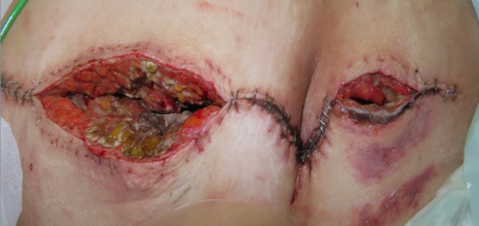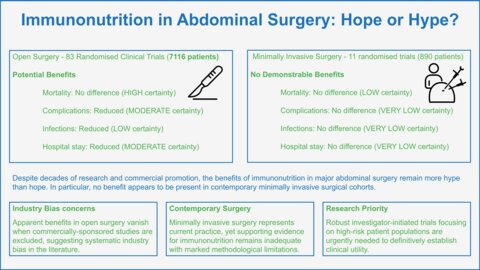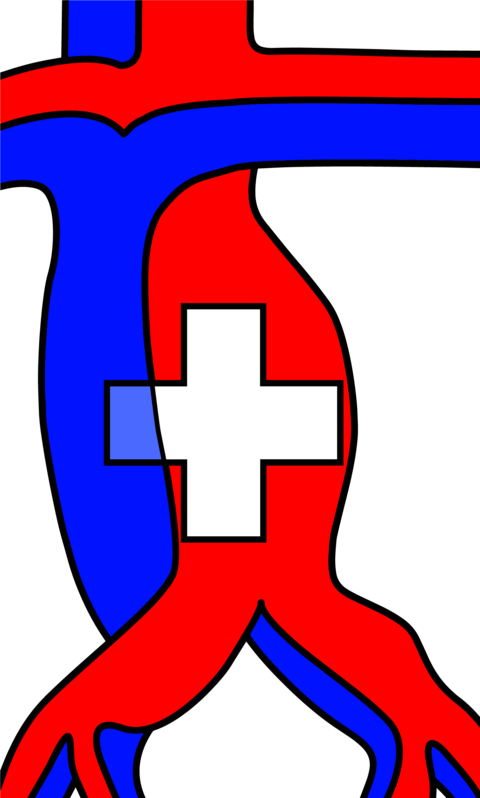Screening Guidelines & Target Population
The Swiss Society of Gastroenterology (SGG) recommends initiating CRC screening in asymptomatic individuals with an average risk (negative family history for CRC, no inflammatory bowel disease, no hereditary polyposis or nonpolyposis cancer syndromes) for CRC at age 50. Several cantons are conducting organized screening programs with minimal costs for patients. The Swiss government has recently decided to prolong the paid screening programs to the age of 74 years. Two methods of CRC screening are currently offered in Switzerland: The fecal immunochemical test (FIT) biannually or colonoscopy every 10 years. Numerous trials have compared the efficacy of different CRC screening modalities. In a recently published randomized, controlled non-inferiority trial of 57’404 adults at average risk for CRC in Spain aged 50 to 69 years, biannual FIT was comparable to colonoscopy in detecting CRC & reducing the risk of CRC mortality at 10 years. The adherence to screening was however higher in patients randomized to FIT (40%) as compared to colonoscopy (32%) (3).
Screening Tests for Colorectal Cancer
FIT
FIT is performed on a small stool sample and is designed to detect occult blood using an antibody directed against human hemoglobin. The test has largely replaced the fecal occult blood test (FOBT), since FIT requires only one stool sample and does not need adjustments in diet or medication. FIT is non-expensive and generally convenient for patients, since it is non-invasive, does not need bowel preparation and patients do not need to be away from home/work. Those factors may lead to a higher adherence to screening as compared to colonoscopy. As far as test-sensitivity and specificity for detection of CRC are concerned, a meta-analysis of 19 cohort studies revealed a sensitivity of 79% and specificity of 94% ( one time FIT, cutoff of 20mg of hemoglobin/g of stool) (4). After a positive FIT, a colonoscopy for further diagnostics/treatment is mandatory.
Multitarget stool DNA testing
The multitarget stool DNA test (mt-sDNA) analyzes DNA shed into the stool from tumor cells and consists of a combination of quantitative molecular assays for KRAS gene mutations (found in 30-40% of CRC tumors), aberrant DNA-methylation associated with colorectal neoplasia and occult blood via hemoglobin immunoassay. Identical to a FIT, a stool sample is required for testing. No bowel preparation or adjustment in medication or diet is needed. In a large study of around 10’000 patients, the sensitivity of mt-sDNA testing for CRC-detection was as high as 92% with a specificity of 87% (5). As far as advanced precancerous lesions are concerned, a study of 20’000 patients showed a sensitivity for detection of 46% using a next-generation mt-sDNA (6). As to date, the mt-sDNA-Test is not available in Switzerland.
Colonoscopy
As mentioned, colonoscopy is recommended as a first-line test for CRC screening in Switzerland. It allows for direct endoscopic visualization of the rectum, the colon and the terminal ileum. In addition to the detection and histological sampling of early-stage CRC it is the only screening modality that allows for identification and endoscopic resection of premalignant lesions such as adenomas same-session. Furthermore, high-risk individuals with a high number of adenomas can be discovered and an appropriate surveillance strategy implemented. Colonoscopy and FIT are comparable screening modalities as far as the detection of CRC is concerned. Among screening tests, colonoscopy however has the highest sensitivity in detecting adenomatous polyps of 75-95% (7). Complex simulations models for CRC screening show that for average-risk individuals, 120 to 150 screening colonoscopies need to be performed to prevent one case of CRC. (8). In terms of disadvantages, a colonoscopy is an invasive procedure, which is primarily done in sedation with possible complications. Furthermore, a bowel preparation is mandatory, which can be troublesome for patients.
Surveillance after Polypectomy
The timing of the first surveillance colonoscopy after polypectomy depends on the findings of the index colonoscopy. According to a SGG consensus recommendation, patients with ≤ 4 adenomatous polyps measuring < 10mm without high grade dysplasia are stratified as “low risk” and are eligible for a surveillance colonoscopy after 10 years. If the number of resected adenomatous polyps exceeds 4 and any polyp measures ≥10mm or a high grade dysplasia is found, the patient is stratified as “high risk” and a surveillance colonoscopy is recommended after 3 years. In hyperplastic polyps, a size ≥10mm, any grade of dysplasia or the finding of a traditional serrated adenoma is considered “high risk” and a next colonoscopy should be scheduled after 3 years.
CT-Colonography
Computed tomography colonography (CTC) is a non-invasive imaging modality that allows for indirect visualization of the colon and rectum. It is primarily used in individuals that cannot undergo colonoscopy due to comorbidities or in the setting of a failed/incomplete colonoscopy. A CTC requires a bowel preparation and ingestion of a contrast agent. In different studies, CTC demonstrated a sensitivity of 70-86% and specificity of 80-86% for the detection of adenomas >6mm (9,10). Concerning polyps smaller than 6mm and flat lesions (e.g. sessile serrated polyps), CTC has a significantly lower sensitivity as compared to colonoscopy (11).
Conclusion
Different invasive and non-invasive modalities for CRC-screening are available with respective assets and drawbacks. In Switzerland, colonoscopy is regarded as the gold standard in CRC-screening enabling the endoscopist not only to screen for CRC but also to detect and treat premalignant lesions. If a non-invasive approach is preferred, FIT is, as far as detection of CRC is concerned, a good alternative.
List of abbreviations
CRC: Colorectal cancer
CTC: Computed tomography colonography
FIT: Fecal immunochemical test
FOBT: Fecal occult blood test
mt-sDNA: Multitarget stool DNA test
SGG: Swiss Society of Gastroenterology
- Bundesamt für Statistik. Krebs in der Schweiz 2015-2019. Bern; 2022 Dec
- Siegel RL, Miller KD, Sauer AG, Fedewa SA, Butterly LF, Anderson JC, u. a. Colorectal cancer statistics, 2020. CA A Cancer Journal For Clinicians [Internet]. 5. März 2020;70(3):145–64. Verfügbar unter: https://doi.org/10.3322/caac.21601
- Castells A, Quintero E, Bujanda L, Castán-Cameo S, Cubiella J, Díaz-Tasende J, u. a. Effect of invitation to colonoscopy versus faecal immunochemical test screening on colorectal cancer mortality (COLONPREV): a pragmatic, randomised, controlled, non-inferiority trial. The Lancet [Internet]. 1. März 2025; Verfügbar unter: https://doi.org/10.1016/s0140-6736(25)00145-x
- Levin TR, Corley DA, Jensen CD, Schottinger JE, Quinn VP, Zauber AG, u. a. Effects of Organized Colorectal Cancer Screening on Cancer Incidence and Mortality in a Large Community-Based Population. Gastroenterology [Internet]. 19. Juli 2018;155(5):1383-1391.e5. Verfügbar unter: https://doi.org/10.1053/j.gastro.2018.07.017
- Imperiale TF, Ransohoff DF, Itzkowitz SH, Levin TR, Lavin P, Lidgard GP, u. a. Multitarget Stool DNA Testing for Colorectal-Cancer Screening. New England Journal Of Medicine [Internet]. 19. März 2014;370(14):1287–97. Verfügbar unter: https://doi.org/10.1056/nejmoa1311194
- Imperiale TF, Porter K, Zella J, Gagrat ZD, Olson MC, Statz S, u. a. Next-Generation Multitarget Stool DNA Test for Colorectal Cancer Screening. New England Journal Of Medicine [Internet]. 13. März 2024;390(11):984–93. Verfügbar unter: https://doi.org/10.1056/nejmoa2310336
- Knudsen AB, Zauber AG, Rutter CM, Naber SK, Doria-Rose VP, Pabiniak C, u. a. Estimation of Benefits, Burden, and Harms of Colorectal Cancer Screening Strategies. JAMA [Internet]. 15. Juni 2016;315(23):2595. Verfügbar unter: https://doi.org/10.1001/jama.2016.6828
- Prakash MK, Lang B, Heinrich H, Valli PV, Bauerfeind P, Sonnenberg A, u. a. CMOST: an open-source framework for the microsimulation of colorectal cancer screening strategies. BMC Medical Informatics And Decision Making [Internet]. 5. Juni 2017;17(1). Verfügbar unter: https://doi.org/10.1186/s12911-017-0458-9
- Pickhardt PJ, Hassan C, Halligan S, Marmo R. Colorectal Cancer: CT Colonography and Colonoscopy for Detection—Systematic Review and Meta-Analysis. Radiology [Internet]. 18. März 2011;259(2):393–405. Verfügbar unter: https://doi.org/10.1148/radiol.11101887
- Halligan S, Altman DG, Taylor SA, Mallett S, Deeks JJ, Bartram CI, u. a. CT Colonography in the Detection of Colorectal Polyps and Cancer: Systematic Review, Meta-Analysis, and Proposed Minimum Data Set for Study Level Reporting. Radiology [Internet]. 1. Dezember 2005;237(3):893–904. Verfügbar unter: https://doi.org/10.1148/radiol.2373050176
- IJspeert JEG, Nolthenius CJT, Kuipers EJ, Van Leerdam ME, Nio CY, Thomeer MGJ, u. a. CT-Colonography vs. Colonoscopy for Detection of High-Risk Sessile Serrated Polyps. The American Journal Of Gastroenterology [Internet]. 29. März 2016;111(4):516–22. Verfügbar unter: https://doi.org/10.1038/ajg.2016.58











